Comments
- When writing code in Python, it's important to ensure that your code can be easily understood by others, say by your friend who wants to see your code.
- Python ignores everything after the hash mark and up to the end of the line. You can insert them anywhere in your code!
- A shortcut for adding comments is by using CTRL + /
Simply select all the lines you want to comment out, then press Ctrl + /, and all the lines will get commented out!
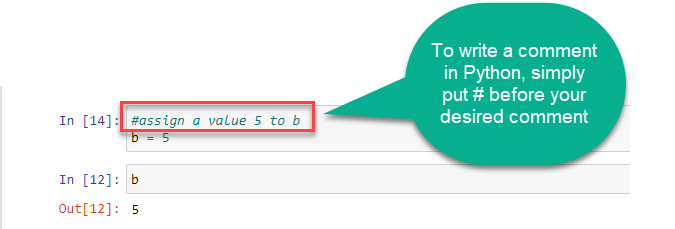
Operators
- Operators perform simple additions, comparisons, etc., on variables and values.
- Python supports the following types of operators; we will look at some commonly used operators.
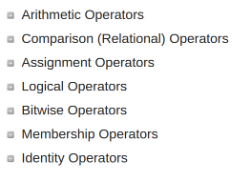
Arithmetic Operator
Using Python, we can perform some basic arithmetic operations such as addition, subtraction, multiplication, etc.
Example:
x = 2
y = 3
x + y # addition
x * y # multiplication
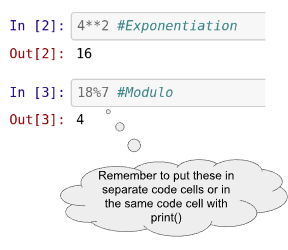
Comparison Operator
- These are used to compare two values
- Gives a boolean result (True/False)
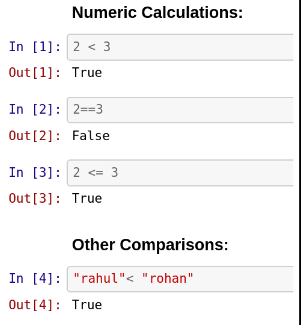
Variables
- A variable can be considered as a storage container for data.
- Every variable will have a name.
- It is a good way to store information while making it easy to refer to that information in our code later.
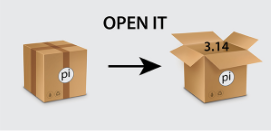
- For instance, instead of working with the number 3.14, we can assign it to a variable pi and use it as many times as we want in our code (wherever required).
- The equal sign (=) is used to assign values to variables.
- The syntax for assigning values to a variable is as follows: Variable name = value or information.
- Example:
- x = 5
- y = "John"
Input and Output
Print Function
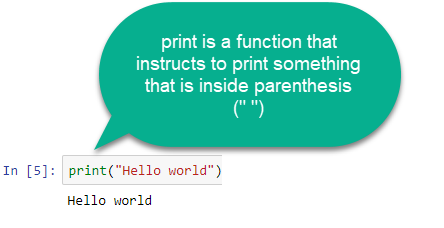
Input Function
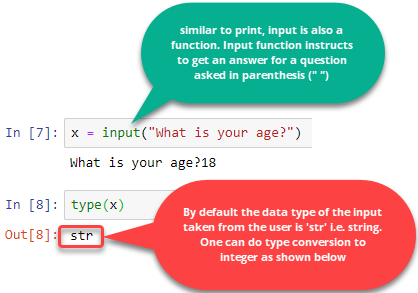
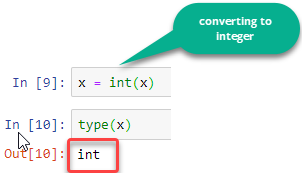
Data Structures and Data Types
- If you're learning Python from multiple sources, you might encounter the terms data structures and data types being used interchangeably.
- Definition: Data structure is a general computer science concept. Its definition reads as follows on Wikipedia:
- Data structure is a data organization, management, and storage format that enables efficient access and modification. More precisely, a data structure is a collection of data values, their relationships, and the functions or operations that can be applied to the data.
- Whereas Data type is a concept specific to a programming language. In a way, it is a concrete implementation of a data structure in a particular programming language (Python or any other language).
- The definition of what constitutes a "type" varies among programming languages. Talking about Python, there are basic data types like int, float, string, etc. You can use the built-in types like list, set, etc., which we will cover in this session.
- Calling these data types as data structures won't be wrong because there is no significant difference between the two in Python.
Data Types in Python
- Before we proceed to discuss what data types in Python are, there are some basic questions that we will discuss. What is data?
- Let's say you are going to meet a friend at her office. When you go to visit her office, the security guard asks you to make an entry in the register before you enter the office. A typical entry register asks for the following information –
| Visitor's name | Visitor's phone number | Visitor's address | Entry time |
| Karen | 32 000 000 | Leuven | 8:30 AM |
-
The above information that you just provided is data.
-
We see that the data entered in the previous slide has different varieties:
- Some are English letters,
- Some are numerical digits, and
- There are some special characters, dash (-) and colon ( : ).
- In this example, our data is divided into four categories – name, phone number, address, and time.
- This categorization of data, based on their characteristic & our need, is called data types.
-
Some of the data types in Python include:
-
Integer: whole numbers, positive or negative numbers. E.g., 100
-
Float: Floating-point numbers are real numbers, rational or irrational. In most cases, this means numbers with decimal fractions. Example: 123.45
-
String: Strings are sequences of characters, or text, enclosed in quotes. Example: "any text", "Karen" \
-
-
For further reading:
-
For practice and different data type examples, visit: https://www.w3schools.com/python/python_datatypes.asp
Getting the Data Type
You can get the data type of any object by using the type( ) function:
- Numerical Types: int (integer), float (decimal)
- Text Type: str (string)
- Boolean Type: bool (True or False)
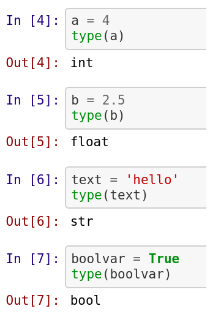
Strings
Sequence Types
- Sequences allow you to store multiple values in an organized and efficient way.
- There are seven sequence types: strings, Unicode strings, lists, tuples, bytearrays, buffers, and xrange objects.
- Nothing to worry about looking at this long list; you will get to know it gradually.
Python Strings
- Strings are a sequence of characters.
- Let us see some examples of String: "My name is Rahul", "Rahul", "Go home". All these are examples of String.
- In Python, Strings are called str.
- There is a specific way of defining String in Python – it is defined within single quotes (') or double quotes ("), or even triple quotes (''').
Accessing String Elements
- Square brackets can be used to access elements of the string.
- Remember that the first character has index 0.
- Index refers to the position of a character in a string. In python index number starts from 0.
- Example:
1 2a = "Hello, World!" print(a[1]) - Will give an output e. Can you understand why?
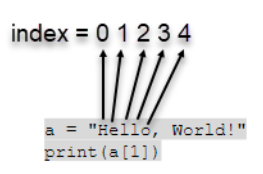
- Hope you got the answer to the previous question now!
String Slicing
- We can also call out a range of characters from the string using string slicing.
- Specify the start and end indexes separated by a colon to return a part of the string. Note that the character of the end index is not included.
- Suppose we want to print World from the "Hello World" string. We can do so as below:

Negative Indexing
- If we have a long string and we want to pinpoint an item towards the end, we can also count backward from the end of the string, starting at the index number -1
- Printing 'r' from the string :
1 2a = "Hello, World!" print(a[-4]) - Get the characters from position -5 to position -1, starting the count from the end of the string:
1print(a[-5:-2]) - Will give an output: orl
String Concatenation
-
String concatenation means adding strings together.
-
Use the + character to add a variable to another variable:
-
Example:

-
Another example:
1 2 3 4x = "Python is " y = "awesome" z = x + y print(z) -
Output: Python is awesome
String Length
-
To get the length of a string, use the len( ) function.
-
Getting the length of the string a :
'a = "Hello, World!"`
1print(len(a)) -
Output: 13
String Methods
- Python has a set of built-in methods you can use on strings.
- Must learn: Learn about important string methods from the below cheatsheet: https://www.codecademy.com/learn/learn-python-3/modules/learn-python3-strings/cheatsheet
- Tip: If you cannot follow, run the code and make out the difference.